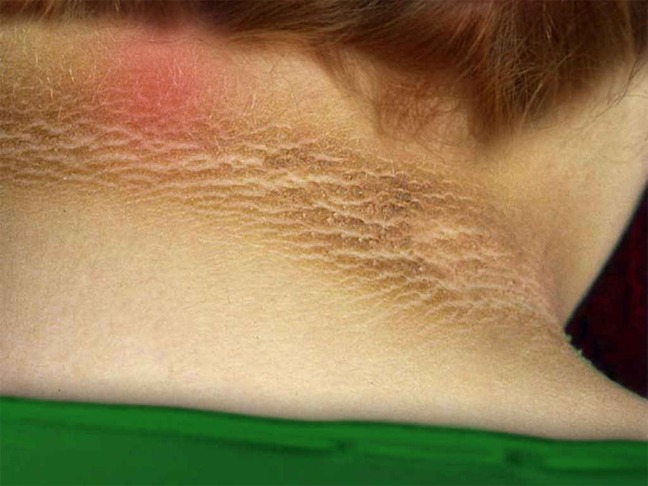Acanthosis Nigricans
Acanthosis nigricans is a form of skin pigmentation disorder that is quite common. Dark skin patches with a thick and velvety texture are one of the more notable signs. The affected skin area may also have an odor and itch.
 The patches may appear in the following areas:
The patches may appear in the following areas:
- armpits
- groin
- neck
- knuckles
- lips
- palms
- elbows
- knees
- soles of the feet
Texas Surgical Dermatology, led by board certified dermatologist Dr. Tri H. Nugyen, provides safe and proven skin care procedures to patients in Houston, Katy, Spring, The Woodlands, Texas, and surrounding communities.
Characteristics Of Acanthosis Nigricans
These are a few prominent features of this condition:
- Thickened brown and velvety textured skin patches may appear in any location. However, they are more common in the skin folds of the groin, armpit and back of the neck.
- Multiple finger-like growths or papillomatosis is commonly found on mucosal and cutaneous surfaces.
- Skin tags may occur in and around the problem areas.
- Itching (pruritus) is common in acanthosis nigricans associated with paraneoplastic pruritus (malignancy).
- Acanthosis nigricans lesions occur sometimes on the mucous membranes of the laryngeal and nasal mucosa and esophagus, and the oral cavity.
- Lesions on the palms, mucosa and soles are more severe and extensive in malignant acanthosis nigricans.
- Generally, middle-aged patients develop this condition with lesions occurring abruptly.
How Is Acanthosis Nigricans Diagnosed?
Dermatologists will look at your skin for diagnosing acanthosis nigricans (AN). You may need further medical tests and blood tests if the dermatologist diagnoses you with the condition. These tests can help you identify if you have AN. The condition is commonly found in people with diabetes.
Acanthosis Nigricans Treatment
AN treatment will allow for the skin to clear. Getting sugar levels under control in pre-diabetic patients can help in fading the dark skin patches. Patients with issues in their adrenal and thyroid glands find that taking care of the condition will help in clearing their skin.
You don’t necessarily need a medical condition to get AN. It is possible that treating underlying medical conditions, such as pre-diabetes doesn’t help in clearing the dark patches. You should treat AN if you want to see clearer looking skin.
These are a few common treatment options for acanthosis nigricans:
- Lightening Skin Color: Prescription ointments, creams, and gel
- Reducing Skin Thickness: Laser treatments
- Decreasing Discomfort and Odor: Applying antibacterial soaps and antibiotics
- Clearing the Skin: Retinoids in the form of a pill or cream
You should know that none of the above-mentioned treatments are specifically designed for treating AN. However, dermatologists have found that they help in treating the condition. In some cases, AN may be difficult to treat.
Results
People with acanthosis nigricans should determine if any other condition is causing the problem. Treating underlying medical conditions will help in clearing the skin. A dermatologist can help treat your skin if there are no underlying medical conditions causing AN. You should see a dermatologist if there are no improvements in the condition after treating a related disease.
Texas Surgical Dermatology, led by board certified dermatologist Dr. Tri H. Nguyen, receives patients from Houston, Katy, Spring, The Woodlands, Texas, and nearby areas for innovative and advanced skin care treatments.
For More Information contact our Board Certified in Dermatologists at Texas Surgical Dermatology in Spring, TX
For more information on procedures and treatments offered at Texas Surgical Dermatology PA please call 832.663.6566 or click here to contact our dermatologists. Helping patients in Houston, The Woodlands, Spring, Katy and other surrounding areas of Texas.

